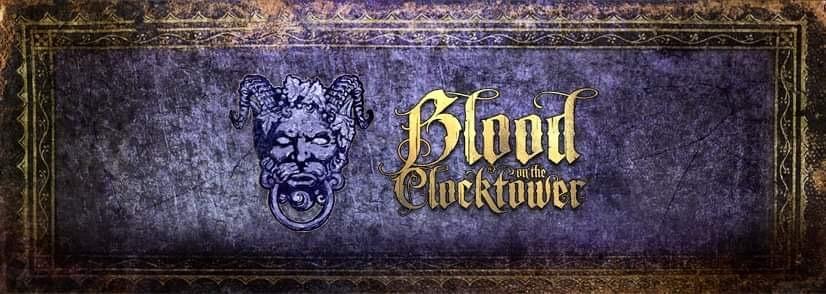Our group played a tense round of a social deception game eerily called Blood on Clock Tower. To provide the narrative: in a strange town filled with mysterious personas, there was found, upon the grand spike of the clock tower, a bloody body impaled at night by something sinister. In response to this tragedy, you know that your quaint little town doesn’t just consist of humble townsfolk and shady outsiders anymore, but also a demon and possibly his malicious minion. The goal is to execute the demon before the majority of the town is slain, otherwise the evil will prevail.
To discuss the mechanics of this game, simply imagine the social deception game Werewolf and build upon it. In Werewolf, humble townsfolk don’t receive information at all during the game. In Blood on Clock Tower, things are slightly altered to invite more play for the townsfolk, in which every townsfolk character has a specific role that contributes to the game. For example, the Empath, Fortune Teller, and Dreamer can gain a piece of information every night; the Artist can ask the storyteller any question once during the game; the Seamstress can learn the alignment of 2 players, and much more. Outsiders are characters who are good but confuse the townsfolk, with abilities or restraints that can draw a lot of suspension onto themselves. For example, the Recluse might register as evil to any townsfolk who receives information; the Klutz chooses a good player to die as soon as they learned that they died. This creates an interesting dynamic within the good team where even if there is information circulating, you can never trust everyone.
Representing the evil team, in Werewolf, there may be multiple werewolf characters, depending on how many players there are, who work to strategically kill every townsfolk at night. In Blood on Clock Tower, there is only one demon, even if there are many players, and each demon character has its own special set of abilities. For example, the Imp can kill itself and transfer the demon character to their minion; The Po kills three players at once if there are no consecutive kills at night; the Leech can only be killed if the townsperson they are attached to is killed. To aid them, there is the minion character, which can be 2 or 3 depending on the size of the group. Each character also has a special power: for example, the Poisoner forces another player’s information to be false; the Boom Dandy, once executed by the good team at the end of the day, forces all but 3 players to die where then, the good team is forced to guess the demon. This creates a great dynamic of a cat and mouse chase, as good players stumble through a web of false or true information to find the evil players among them.
Finally, in Werewolf, once people are killed, they are kicked from the game, acting only as witnesses but not allowed to say anything. In contrast, dead players in Blood on Clock Tower just lose their ability, but can speak during the game, and have one vote during the rest of the game.
Blood on Clock Tower creates a magic circle where there might be an abundant amount of information but even still, there are worlds or scenarios where none of that information is true, because there was a minion or demon who poisoned that player. And thus, this still creates an absurd amount of mistrust that circulates among the players. The demon which can bluff with roles that aren’t in the game can start to manipulate information and shift blame around to avoid suspicion, giving them resources to outwit others. This is how this game excels at a social deception that includes all players, and creates mistrust even with rational information, thus creating more conflict among the players. The game creates many places or roles to hide behind, and thus playing this game felt more elaborate than playing games like Werewolf or Mafia. After death, players can still be engaged and eager to solve the puzzle and see through the lies. This becomes the ultimate game to outwit each other as people use logical and critical thinking to dissect everything.
Playing this, however, requires a lot of experience, or a lot of attention to understand and play smoothly, as there are a lot of mechanics and dynamics and critical thinking. Our group was playing with people who have never played before, and the setup was notable because it took quite a bit to explain all the procedures and rules of the game. The game, once it begins, requires every player to become independent, rather than rely on each other, since everyone has a piece of information. For a new player, this can immediately be daunting, and will slow down the game. Even with a manual of the roles in front of players , it can still be confusing. There’s also an abundant amount of scripts to play. I would make it clearer which scripts are beginner friendly that are also as challenging as the more complex ones.
, it can still be confusing. There’s also an abundant amount of scripts to play. I would make it clearer which scripts are beginner friendly that are also as challenging as the more complex ones.



